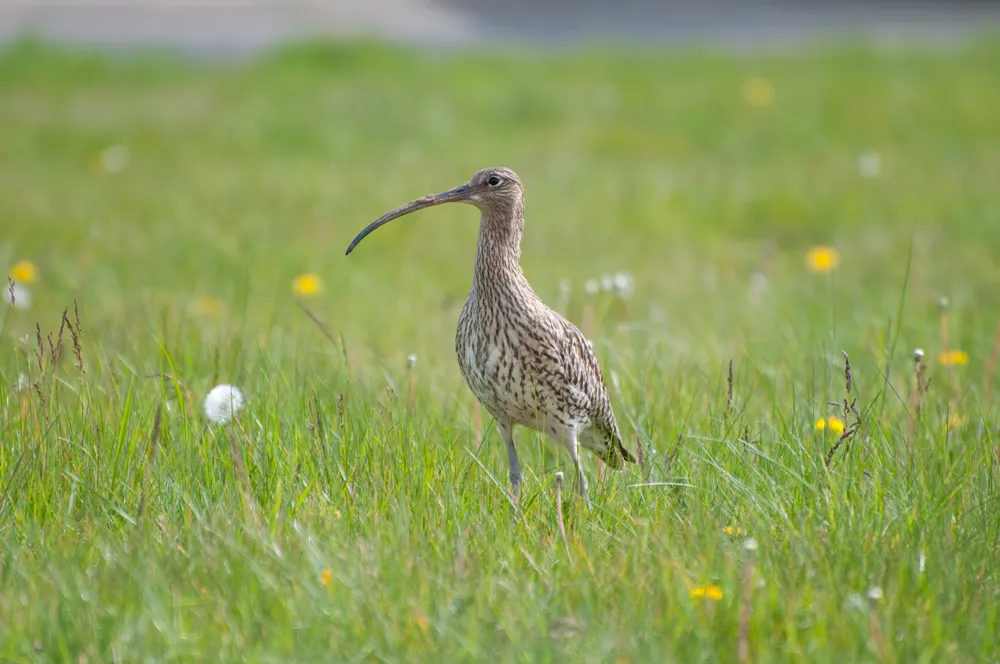Citation

Overview
Whether it is the swooping display and ‘pee-wit’ calls of a breeding Lapwing or the haunting cry of a Curlew over a tall hay meadow, breeding waders deliver some of the most iconic sights and sounds of the British countryside in spring. But, along with many of the other species breeding in agricultural habitats, all is not well with these charismatic birds, as BTO Research Ecologist Sam Franks reveals.
In more detail
Throughout Europe, birds associated with agricultural habitats comprise the highest proportion (23%) of threatened species, with breeding waders among the most vulnerable. Despite these conservation concerns, only Ruff and the Baltic population of Dunlin feature on the EU Birds Directive list of threatened species, while all except Dunlin can be hunted in many EU member states under certain restrictions.
Grassland-breeding waders face a set of common threats throughout much of Europe. Loss or deterioration of breeding habitat through changing agricultural practices, together with increasing predation pressure, are the primary drivers of population declines, reducing the number of chicks produced to below the threshold needed to maintain stable populations. In western Europe, earlier cropping, mowing and grazing dates – a consequence of agricultural intensification and climate change – can result in the destruction of eggs and chicks by agricultural machinery and livestock. Intensively-managed grassland monocultures and large-scale field drainage both result in poorer food resources for chicks, meaning their growth and potentially survival is reduced. Furthermore, intensive agricultural practices can increase the vulnerability of nests and chicks to predation by reducing the quality of their breeding habitat, while higher numbers of predators in the landscape increases predation rates of eggs and chicks.
Large-scale conservation action requires both the effective use of policies to facilitate positive change, and conservation management actions which will achieve meaningful positive results. In Europe, site protection measures – such as Special Protection Areas (SPAs) under the EU Birds Directive and agri-environment schemes (AES), which pay farmers for land management benefiting wildlife – are the primary policy mechanisms aimed at breeding wader conservation. Integral to delivering policies on the ground are conservation management actions, which commonly include 1) modifying mowing and grazing regimes to improve breeding habitat and reduce the risk of nest destruction; 2) reducing the use of agrochemicals such as herbicides and pesticides; 3) improving wet conditions necessary for good foraging habitat; 4) protecting nests from agricultural activities and predation, for example by using fencing; and 5) controlling generalist predators such as corvids, foxes and mustelids.
As part of an EU LIFE project (http://ec.europa.eu/environment/life), several conservation organisations were tasked with producing a multi-species action plan for European grassland-breeding waders. A fundamental part of this plan was to summarise what is currently known about the effectiveness of widely used conservation actions for these species, across all of Europe. Together with our colleagues at the Sovon Dutch Centre for Field Ornithology, we combed through the published and unpublished literature for suitable studies: those which tested the effect of either policy or management actions on numbers of breeding waders, changes in their numbers over time, or elements of wader productivity such as nest or chick survival. We classified the ‘effectiveness’ of conservation actions as their likelihood of producing more breeding waders, an increase in the numbers of waders over time, or higher nest or chick survival.
Some of the most effective actions were site protection and higher-tier agri-environment schemes targeted specifically at achieving outcomes for waders. Higher-tier AES was particularly effective at improving wader numbers over time and increasing wader productivity. While mowing often resulted in increases in wader numbers over time, probably by improving breeding habitat quality, nests and chicks were more likely to benefit from reduced mowing. It was more difficult to discern a clear outcome for grazing, probably because there are both benefits (improving habitat) and risks (trampling or eggs and chicks) associated with using livestock. Improving the wetness of breeding habitat was successful at increasing productivity in the majority of cases, while protecting nests against either agricultural activities and/or predation was often successful at increasing wader numbers over time and improving nest and chick survival. Predator control was only likely to be successful if it was used in combination with other conservation actions.
Our research shows that the policy and conservation management actions already in place in many European countries are broadly effective, though to varying degrees. However, despite this positive news, wader populations are still declining. This means that success rates may not be as high as they need to be, that the magnitude of positive effects may be too small, and/or the scale at which conservation actions are applied is unable to compensate for declines occurring outside managed areas. Policy tools such as SPAs and AES are clearly achieving positive effects, which is a key message at a time of uncertainty for national and European institutions and agricultural policy reform.
Breeding waders have a unique ability to transcend many of the differences between groups who have often conflicted over use and management of the British and European countryside. Conserving them presents an opportunity for different stakeholder groups to collaborate in driving the changes needed to protect and restore these iconic birds.


